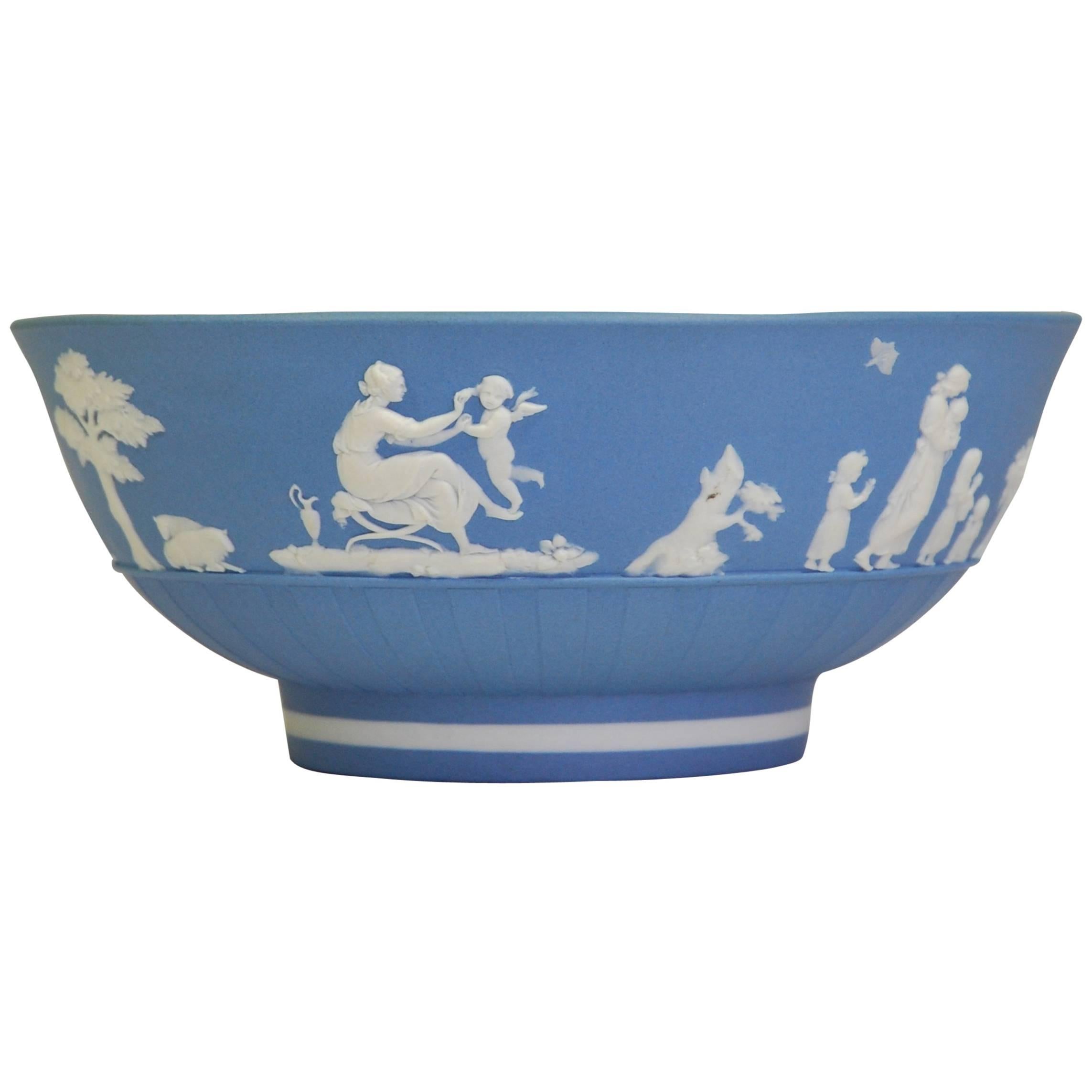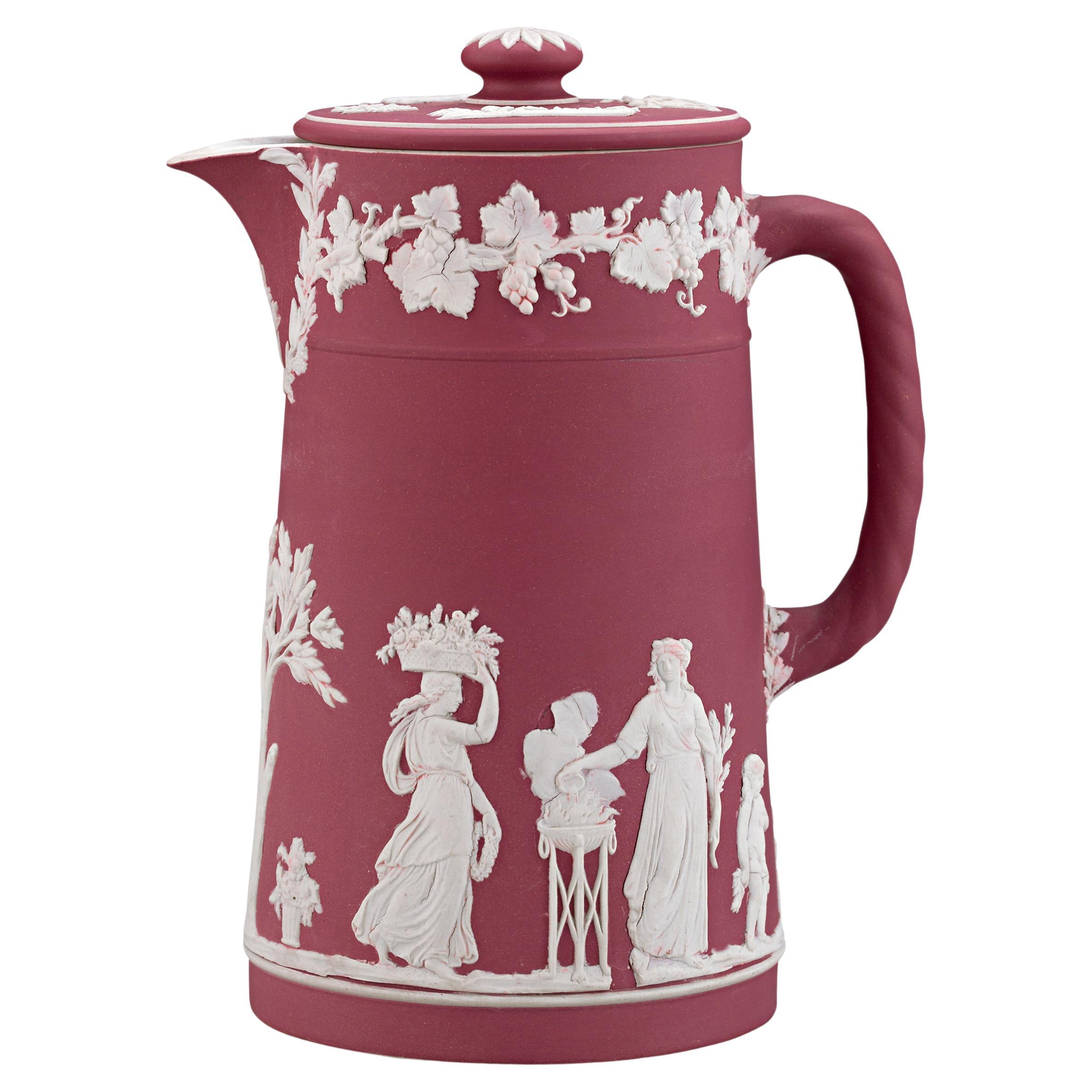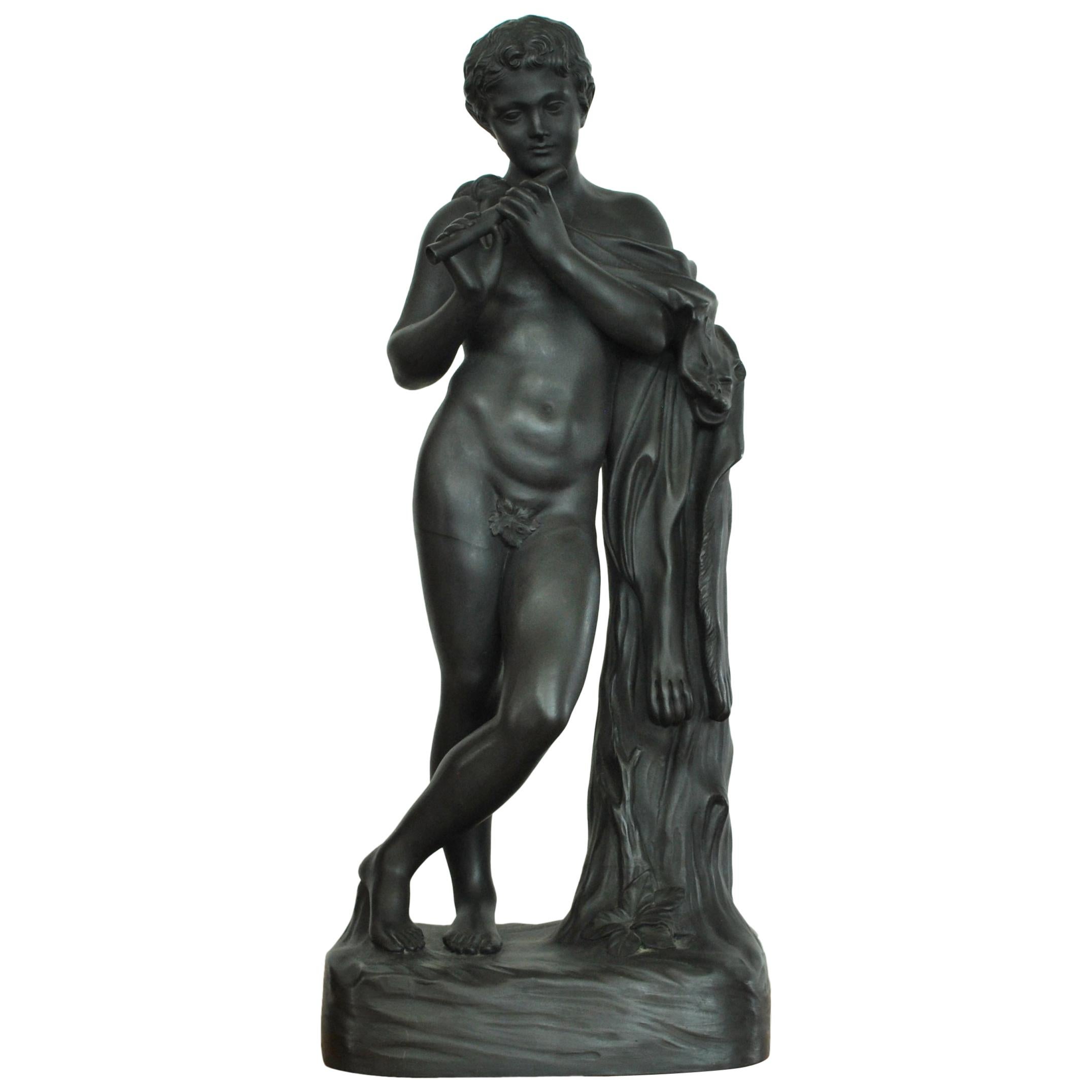Items Similar to Jasperware Buckle, Wedgwood, Matthew Boulton, Circa 1795
Want more images or videos?
Request additional images or videos from the seller
1 of 7
Jasperware Buckle, Wedgwood, Matthew Boulton, Circa 1795
About the Item
A jasper medallion decorated with Aphrodite, set in cut steel as a buckle, probably by Matthew Boulton. Original box.
The Greek goddess Aphrodite is often depicted in ancient art with a dolphin. In mythology, dolphins were considered sacred to Aphrodite, and they were associated with love, beauty, and fertility. According to one legend, Aphrodite emerged from the sea on a shell-borne chariot drawn by dolphins, and the creatures were said to be her faithful servants. As a result, images of Aphrodite with dolphins became a popular motif in Greek art, appearing on vases, sculptures, and other decorative objects. The association between Aphrodite and dolphins has continued through the centuries, and the image of the goddess with a dolphin remains a popular symbol of love and beauty.
Matthew Boulton (1728-1809) was an English manufacturer and entrepreneur who was best known for his contributions to the Industrial Revolution. He was the co-founder of the Soho Manufactory, a company that produced a wide range of products including metal goods, buttons, buckles, and jewelry. Boulton was a pioneer in the use of steam power in manufacturing and was a major advocate for the development of the factories and the use of machines in production.
Boulton and Wedgwood were close friends and business partners, and they collaborated on several projects during the late 18th century. They worked together to develop new manufacturing processes and to promote their products both in England and abroad. Boulton was instrumental in helping Wedgwood expand his business, and their partnership was considered one of the most successful collaborations of the Industrial Revolution. Their friendship and business relationship had a lasting impact on the development of the British pottery and manufacturing industries.
- Attributed to:Wedgwood (Manufacturer)
- Dimensions:Height: 3 in (7.62 cm)Width: 2.5 in (6.35 cm)Depth: 0.25 in (6.35 mm)
- Style:Neoclassical (Of the Period)
- Materials and Techniques:
- Place of Origin:
- Period:
- Date of Manufacture:circa 1795
- Condition:The buckle in excellent condition; lid to box is warped and will not quite close.
- Seller Location:Melbourne, AU
- Reference Number:
About the Seller
5.0
Vetted Seller
These experienced sellers undergo a comprehensive evaluation by our team of in-house experts.
Established in 2005
1stDibs seller since 2017
68 sales on 1stDibs
Typical response time: 5 hours
- ShippingRetrieving quote...Ships From: Melbourne, Australia
- Return PolicyA return for this item may be initiated within 14 days of delivery.
More From This SellerView All
- Pale Blue Jasperware Bowl, Wedgwood, circa 1790By WedgwoodLocated in Melbourne, VictoriaIn solid slate blue jasper, with inlaid foot; decorated with numerous reliefs typical of the period. Engine turned decoration and lapidary polished interior. Exhibited: Wedgwood, Ma...Category
Antique 1790s English Neoclassical Pottery
MaterialsStoneware
- Potpourri in Cobalt Jasperware, Wedgwood, circa 1820By WedgwoodLocated in Melbourne, VictoriaA broad, flat potpourri in cobalt jasper dip, with a tall pierced cover.Category
Antique Mid-19th Century English Neoclassical Pottery
MaterialsPottery
- Figure Faun with Flute, Wedgwood, circa 1870By WedgwoodLocated in Melbourne, VictoriaAfter the antique “Piping Faun” now in the Louvre Museum; the result of it being bought by Napoleon from the Borghese collection. The "Piping Faun" is...Category
Antique 1870s English Neoclassical Pottery
MaterialsStoneware
- Pair of Salts in Slate Blue Jasperware, Wedgwood, circa 1790By WedgwoodLocated in Melbourne, VictoriaA pair of salt cellars in slate-blue jasperware, with inlaid rims. decorated with the Romantic Poor Maria and Maternal Affection by Lady Templetown, as well as a more classical Cupid's Triumph. In the 1790s, salt cellars were an essential tableware item used in England for serving and consuming salt. A salt cellar is a small container, often made of silver, glass, or porcelain, used to hold salt at the dining table. These cellars were typically placed in the center of the table, within easy reach of diners. Salt was taken from the cellar...Category
Antique Late 18th Century English Neoclassical Pottery
MaterialsStoneware
- Hot Milk Jug, Engine-Turned Jasperware. Wedgwood, C1785By WedgwoodLocated in Melbourne, VictoriaSuperb and exceptionally rare small jug in tricolour engine-turned diceware. This is very early jasperware, made when "cherokee clay" was still being used. This clay, sourced from America, contained kaolin, the ingredient that makes porcelain translucent. Exhibited: Wedgwood, Master Potter to the Universe, Roche Foundation, 2023. Engine turning, also known as guilloche, is a decorative technique that was commonly used on eighteenth-century pottery. The process involved cutting intricate, repetitive patterns into a metal or ceramic surface using a machine known as a rose engine...Category
Antique Late 18th Century English Neoclassical Pottery
MaterialsStoneware
- Pair of Bacchantes in Black Basalt. Wedgwood C1860.By WedgwoodLocated in Melbourne, VictoriaPerhaps the most complex work in black basalt undertaken on any scale by Wedgwood, the Bacchantes, are adapted from sculptures by Clodion. A large and impressive pair, ful of vigour ...Category
Antique Mid-19th Century English Neoclassical Pottery
MaterialsStoneware
You May Also Like
- Wedgwood Crimson Jasperware PitcherBy WedgwoodLocated in New Orleans, LAThis striking Wedgwood crimson dip bas-relief covered jug features an applied white jasper neoclassical decoration of grapevines bordering the rim. De...Category
20th Century English Neoclassical Pottery
MaterialsPottery
- Set 18 Wedgwood Creamware Dessert or Salad Dishes England, circa 1820By WedgwoodLocated in Katonah, NYMade in England in the early 19th century, circa 1815, these Wedgwood dessert or salad dishes are a beautiful and sophisticated set. The combination o...Category
Antique Early 19th Century English Neoclassical Dinner Plates
MaterialsCreamware
- Wedgwood Pearlware Fox Hunting Jug, circa 1810By WedgwoodLocated in Downingtown, PAWedgwood pearlware fox hunting jug, circa 1810. This ovoid jug has a cylindrical neck, a projecting lip, and a ribbed ear-shaped loop handle. Bat prin...Category
Antique Early 19th Century English Georgian Pitchers
MaterialsPearlware, Pottery
- Wedgwood Creamware Platter or Charger 18th Century Made in England Circa 1785By WedgwoodLocated in Katonah, NYThis Wedgwood creamware round platter or charger was made in 18th century England circa 1785. The border is decorated with a traditional neoclassical design of iron-red flower heads...Category
Antique Late 18th Century English Neoclassical Decorative Dishes and Vid...
MaterialsCreamware
- Set Dozen Wedgwood Creamware Dinner Dishes Made England 1904By WedgwoodLocated in Katonah, NYMade in 1904, the border design on this set of Wedgwood dinner dishes was inspired by designs in Josiah Wedgwood's mid-18th century First Pattern Book. The red berries and beige leaves on the vine combine perfectly with the creamy color of the creamware plate. The result is a subtle beauty. The underside of the dishes has an impressed mark for Wedgwood and "W G" for August 1904. Dimensions: diameter 9.25" x .75" height Condition: Excellent Price: $1120 Background of Early 20th Century Wedgwood: In the late 19th century, Wedgwood designs were mostly influenced by the Aesthetic and Arts and Crafts movements. In 1904 Wedgwood promoted John Goodwin...Category
Early 20th Century English Neoclassical Dinner Plates
MaterialsCreamware
- Wedgwood Majolica Grape Vine & Basket CompoteBy WedgwoodLocated in Chelmsford, EssexWedgwood Majolica compote which features vine leaves and grapes on a basket weave ground. Colouration: green, brown, blue, are predominant. The piece ...Category
Antique 1870s English Victorian Serving Bowls
MaterialsEarthenware
Recently Viewed
View AllMore Ways To Browse
Buckle Set
Antique Silver Symbols
Antique Buckles
Buttons Glass
Antique Symbols On Silver
English Antique Glass Company
Antique Cut Steel
Glass Sea Shell
Art Glass Medallion
Drawn Antique Glass
Greece Medallion
Greek Medallions
Expandable Box
Jasper Box
Steel Medallions
Antique Beauty Products
British Art Pottery
Molded Glass Jewelry





